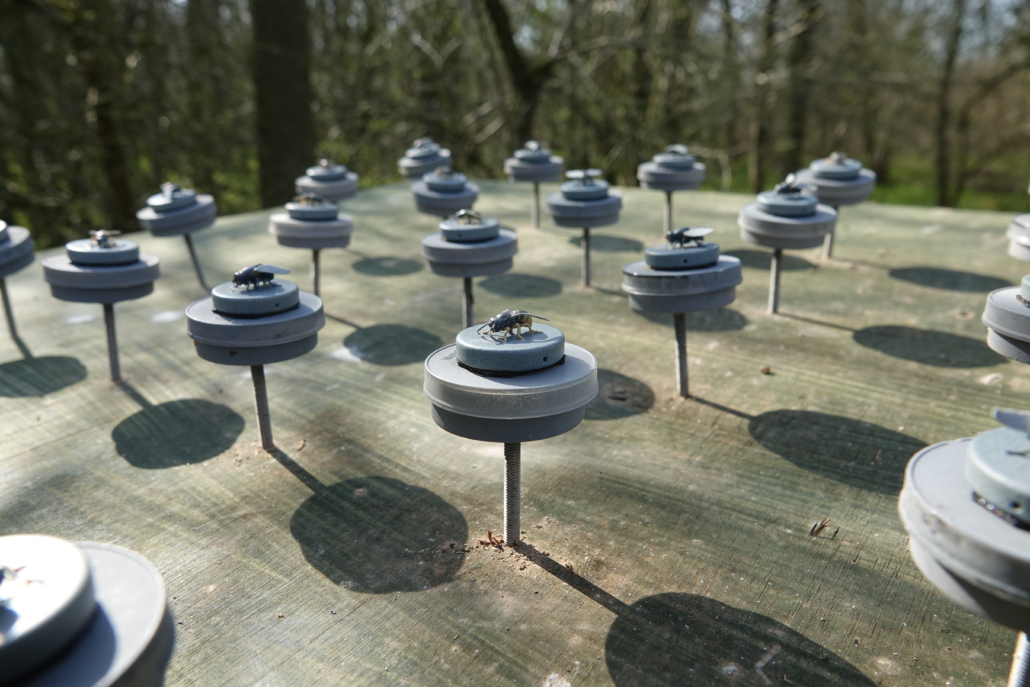The imitation game – why are some species better at fooling predators than others?
Experts from the University of Nottingham have created life-size 3D-printed insect models to explore how some species trick predators into thinking they’re more dangerous than they really are — and avoid being eaten as a result.
In the new study, published in Nature, a team of experts, led by Dr Tom Reader and Dr Christopher Taylor in the School of Life Sciences, used 3D printed models to investigate Batesian mimicry – a phenomenon where a harmless species evolves to resemble a harmful species, fooling predators into avoiding them.
Mimics vary greatly in how closely they resemble the species they imitate, raising questions about what limits evolution of the less accurate mimics. For example, why are some hoverflies almost indistinguishable from wasps, whilst others only vaguely resemble them?
By using the life-size models, the team was able to precisely manipulate the key features of mimics, such as their shape and colour patterns.
Dr Tom Reader said: “In our study we are asking a question about how evolution works and what determines where evolution reaches at a particular point in time. Our experiments looked at the competing influences which might ultimately shape what organisms look like. Insects and mimicry offer a powerful and accessible way to investigate questions that are relevant across the entire tree of life.”
Dr Taylor said: “Through these experiments we’ve demonstrated the potential for using modern 3D imaging along with computer morphing to manipulate insect models in all sorts of interesting ways.
“The models enabled us to ask “what-if” questions about these insects. What if they were better mimics because their colour was more wasp-like? It allowed us to play around with the insect’s appearance in a way you can’t with real specimens. Which meant we could ask a much broader range of questions about what it is that makes a good or bad mimic.”
The team used the 3D scans of the real wasp and the mimic (hoverfly) species as starting points to develop variations of different traits, including shape, colour, pattern and size. They then used additive manufacturing (3D printing) to turn these images into physical stimuli to use in experiments.
The team wanted to understand how good a mimic needs to be to fool a predator, and how the poor mimics get away with not being very good.
To understand the scale of the mimic’s imperfection, they tested the upper limits of the mimic’s accuracy by looking at whether wild predators, in this case birds, would discriminate highly accurate, yet imperfect, mimics from their models. They then tested whether the presence of more than one model species would increase the protection of the average-looking mimics.
They looked at shape, colour, pattern and size by varying the different components independently and testing which was selected most strongly for accuracy. They finally tested the ’eye of the beholder’ hypothesis by comparing the responses of a range of predators towards the same mimics.
The team found colour to be a very important feature of what made a ‘successful’ mimic, as well as size in some instances. The team also found that the mimic could get away with being less accurate if they were attacked by spiders compared to birds.
Dr Reader adds: “As an evolutionary biologist you are constantly trying to understand something that happened in the past, and without a time machine you can’t know how a hoverfly ended up like it did. These techniques enable us to visualise and recreate life-size full colour models of what ancestors or future descendants of today’s hoverflies might look like and to then ask real predators, such as birds and spiders – what do you think about these characteristics that might have been present in the past or future?”
Key Point for Policymakers:
Investing in bio-inspired technologies and interdisciplinary research (e.g., evolutionary biology + 3D imaging) can uncover vital insights into species adaptation and biodiversity resilience, informing conservation strategies and ecological forecasting.
Read more here: https://www.nature.com/articles/s41586-025-09216-3



